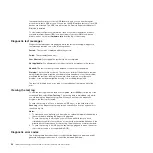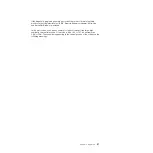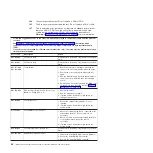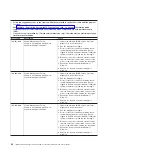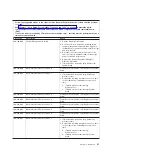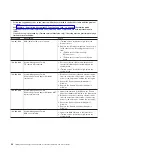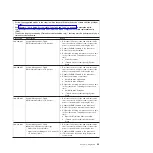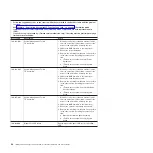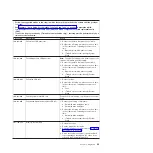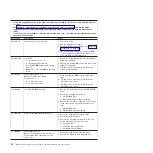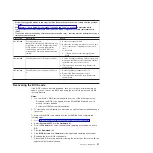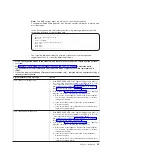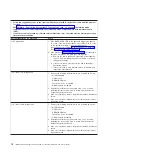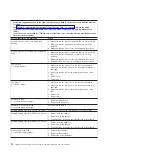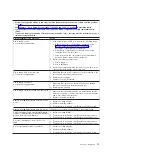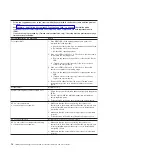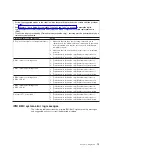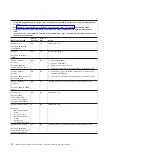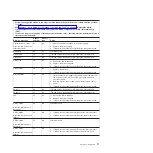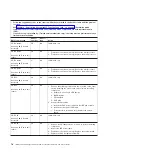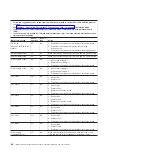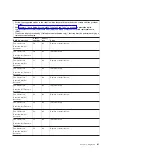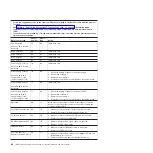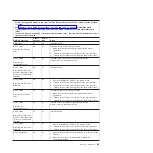
The
flash
memory
of
the
server
consists
of
a
primary
page
and
a
backup
page.
The
backup
page
is
a
protected
area
that
cannot
be
overwritten.
The
recovery
boot
block
is
a
section
of
code
in
this
protected
area
that
enables
the
server
to
start
up
and
to
read
a
recovery
diskette.
The
recovery
utility
recovers
the
system
BIOS
code
from
the
BIOS
recovery
files
on
the
diskette.
To
recover
the
BIOS
code
and
restore
the
server
operation
to
the
primary
page,
complete
the
following
steps:
1.
Read
the
safety
information
that
begins
on
page
and
2.
Turn
off
the
server
and
peripheral
devices
and
disconnect
all
external
cables
and
power
cords;
then,
remove
the
cover.
3.
Locate
the
BIOS
recovery
jumper
(J35)
on
the
system
board.
(see
4.
Move
the
jumper
from
pins
1
and
2
to
pins
2
and
3
to
enable
the
BIOS
recovery
mode.
5.
Insert
the
BIOS
recovery
diskette
into
the
diskette
drive.
6.
Reinstall
the
server
cover;
then,
reconnect
all
power
cords.
7.
Restart
the
server.
The
power-on
self
test
(POST)
starts.
8.
Select
1
-
Update
POST/BIOS
from
the
menu
that
contains
various
flash
update
options.
9.
When
prompted
as
to
whether
you
want
to
save
the
current
code
to
a
diskette,
press
N
.
10.
When
prompted
to
choose
a
language,
select
a
language
(from
0
to
7),
and
press
Enter
.
11.
Remove
the
BIOS
recovery
diskette
from
the
diskette
drive.
12.
Turn
off
the
server,
and
disconnect
all
power
cords
and
external
cables;
then,
remove
the
server
cover.
13.
Move
the
BIOS
recovery
jumper
back
to
pins
1
and
2
to
return
to
normal
startup
mode.
14.
Reconnect
all
external
cables
and
power
cords,
and
turn
on
the
peripheral
devices;
then,
reinstall
the
server
cover.
15.
Restart
the
server.
System
event/error
log
messages
A
system
event/error
log
is
generated
only
if
a
Remote
Supervisor
Adapter
II
SlimLine
is
installed.
The
system-error
log
can
contain
three
types
of
messages:
Information
Information
messages
do
not
require
action;
they
record
significant
system-level
events,
such
as
when
the
server
is
started.
Warning
Warning
messages
do
not
require
immediate
action;
they
indicate
possible
problems,
such
as
when
the
recommended
maximum
ambient
temperature
is
exceeded.
Error
Error
messages
might
require
action;
they
indicate
system
errors,
such
as
when
a
fan
is
not
detected.
Each
message
contains
date
and
time
information,
and
it
indicates
the
source
of
the
message
(POST/BIOS
or
the
service
processor).
68
IBM
System
x3655
Type
7985
and
7943:
Problem
Determination
and
Service
Guide
Summary of Contents for 7985
Page 1: ...IBM System x3655 Type 7985 and 7943 Problem Determination and Service Guide...
Page 2: ......
Page 3: ...IBM System x3655 Type 7985 and 7943 Problem Determination and Service Guide...
Page 8: ...vi IBM System x3655 Type 7985 and 7943 Problem Determination and Service Guide...
Page 18: ...xvi IBM System x3655 Type 7985 and 7943 Problem Determination and Service Guide...
Page 36: ...18 IBM System x3655 Type 7985 and 7943 Problem Determination and Service Guide...
Page 110: ...92 IBM System x3655 Type 7985 and 7943 Problem Determination and Service Guide...
Page 112: ...View 1...
Page 159: ...Battery Chapter 5 Removing and replacing server components 141...
Page 202: ...184 IBM System x3655 Type 7985 and 7943 Problem Determination and Service Guide...
Page 212: ...194 IBM System x3655 Type 7985 and 7943 Problem Determination and Service Guide...
Page 217: ......
Page 218: ...Part Number 42D2167 Printed in USA 1P P N 42D2167...



